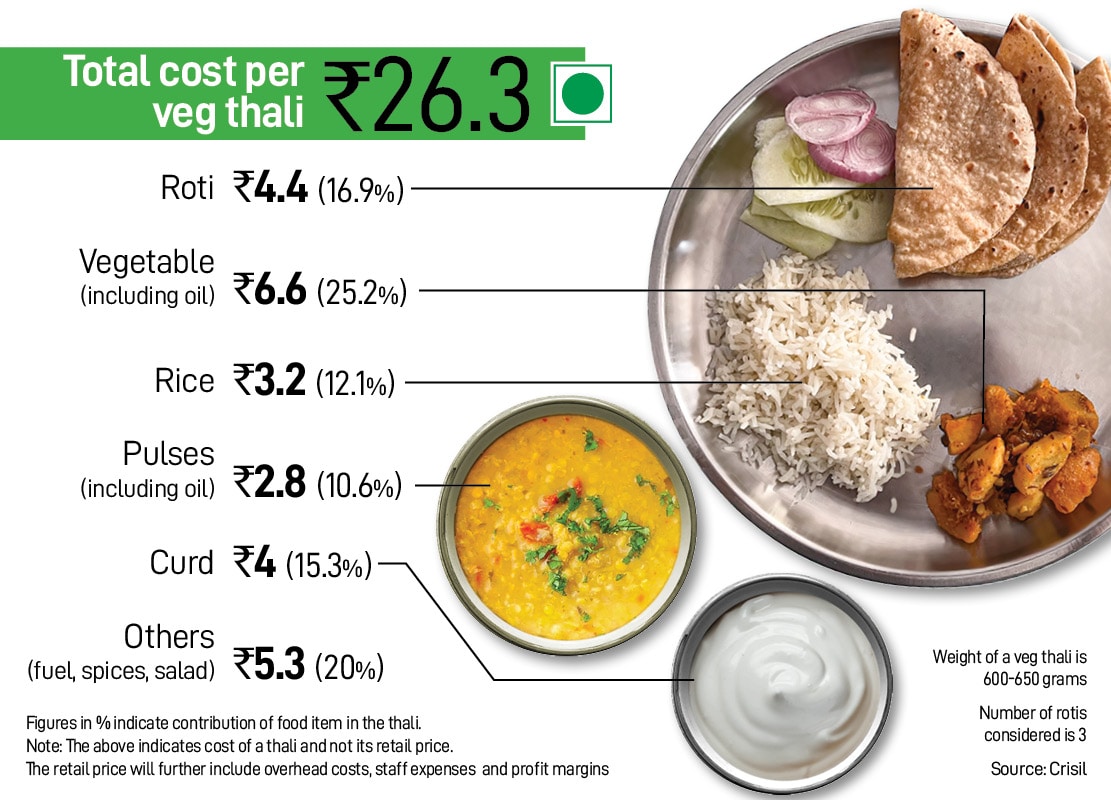
How India eats: Thali gets costly as tomato prices hit the roof
Forbes India takes a look at how the average price of a food plate in India changes every month, indicating the impact on the common man's expenditure. We will analyse the Indian thali in a monthly series called 'How India Eats'
 Infographics: Kapil Kashyap
Infographics: Kapil Kashyap
You may think that only tomato prices increased drastically in June, and that had a heavy impact on the monthly food expenditure of a common man. Well, that may not be totally correct. Prices of other essentials, which contribute to a typical Indian thali or a meal, like tur dal or pigeon peas and gram jumped by 3 percent in June. Other food items which became expensive last month were cereals, chicken and pulses.
In June, the average cost of a vegetarian thali escalated at a faster pace than a non-vegetarian meal, which includes chicken. The average cost of a vegetarian thali jumped by nearly 5 percent to Rs26.3 from Rs25.1 in May, based on an analysis by Crisil. A non-vegetarian thali cost Rs60 in June, 1.2 percent higher from Rs59.3 in the previous month.
The average cost of a thali is calculated based on input prices prevailing in north, south, east and west India. The data also reveals the ingredients (cereals, pulses, broiler poultry, vegetables, spices, edible oil, cooking gas) driving changes in the cost of a thali.
Also read: Inflation Rate in India 2023: A closer look at economic trends









